Wildlife Parks And Reserves In Kenya
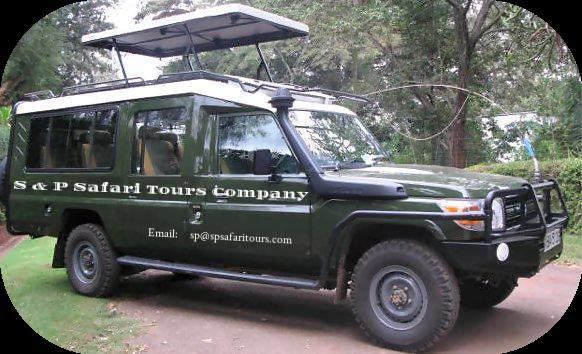
Africa - The Land of the wild!
Kenya, among all African nations, remains among the top when it comes to wildlife like lions, elephants, giraffes, rhinos and many more. Example, just from the airport entry (Nairobi International Airport), all the way to the capital's center, you see animals just inside the fence that separates the park from the city. This fence runs along a highway to the city center. Nairobi National park is the only natural safari park that has a city scape background that can be seen from almost any part within the park and full of wildlife..
Gain Unrivaled Experience, Unlimited Knowledge And A Passion For Exploring Africa Again And Again With SP Safari Tours, Co. Yes - A Land Of Sweeping Savannah Grasslands Inhabited By Charismatic Mega-Fauna, Including Big Cats, The Big Five (Elephant, Buffalo, Lion, Leopard And Rhino). The list below shows the most visited National Parks and Reserves, Game Reserves, as well as the list of the Marine parks and reserves.
Masai Mara National Park
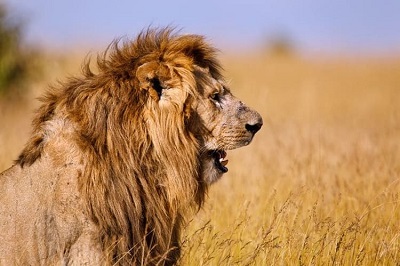
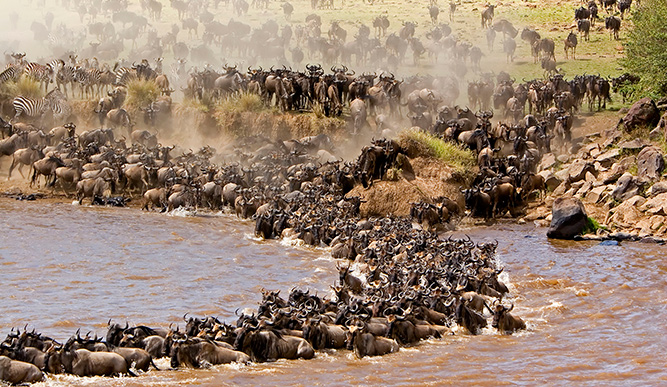
Maasai Mara National Reserve (also known by the local people as The Mara) is a large game reserve in Narok County, Kenya, contiguous with the Serengeti National Park in Mara Region, Tanzania. It is named in honor of the Maasai people (the ancestral inhabitants of the area) and their description of the area when looked at from afar: "Mara," which is Maa (Maasai language) for "spotted," an apt description for the circles of trees, scrub, savanna, and cloud shadows that mark the area.
It is globally famous for its exceptional population of lions, leopards and cheetahs, and the annual migration of zebra, Thomson's gazelle, and wildebeest to and from the Serengeti every year from July to October, known as the Great Migration.
The Maasai Mara National Reserve is only a fraction of the Greater Mara Ecosystem, which includes the following Group Ranches: Koiyaki, Lemek, Ol Chorro Oirowua, Olkinyei, Siana, Maji Moto, Naikara, Ol Derkesi, Kerinkani, Oloirien, and Kimintet.
The Reserve has unfenced borders with a number of private conservancies, including Tanzania's Serengeti National Park. This vast protected landscape is one of the top wildlife destinations in Africa, and Kenya's flagship conservation area.
Game viewing in the Masai Mara is excellent all year around thanks to the diverse population of resident game - including lion, leopard, elephant and buffalo – plus popular species like zebra, giraffe, hyena, eland and gazelle. The Mara’s big cats are even the stars of a popular wildlife TV series.
From July to November one of nature’s greatest spectacles, the Wildebeest Migration, reaches the Mara - the sheer number of wildebeest arriving in the area is staggering. The migration is a dramatic mass movement of almost two million wildebeest, zebra and gazelle in a seasonal annual cycle driven by rainfall. To reach the Mara’s fresh grazing, wildebeest make dramatic river crossings, facing enormous crocodiles to feast on the Mara plains and regain their strength. November's short summer rains trigger the last leg of the migration, when the wildebeest move south to their Serengeti calving grounds. The calving season also happens in the Mara between December and January. Known as the green season, it’s a time when surface water is plentiful and wildebeest, zebra and antelope give birth to their calves, foals and fawns. With so much easy prey around, it is also a good time for predators to raise their cubs and pups, making for wonderful photographic opportunities.
The Masai Mara and its neighbouring private conservancies offer a range of accommodation, from child-friendly to romantic. The park can be crowded in high season, which is why we recommend staying in one of the neighbouring private conservancies where you’ll enjoy the advantage of easy access to the Mara for the superb game-viewing and migration scenes, but can also retreat to the conservancy’s crowd-free setting where off road game viewing, night drives and guided nature walks are permitted. We highly recommend taking a hot-air balloon flight and experiencing an authentic cultural interaction with the Maasai people. Chat to your safari expert about combining a Mara safari with Kenya’s other top destinations, such as Amboseli National Park or a beach break to the glorious sun-drenched islands of the Seychelles.
Click here to learn more, watch a video or even get a quote for this safari tour
Amboseli National Park.
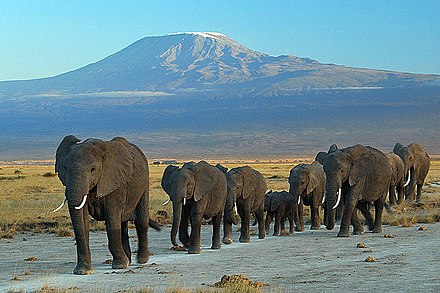
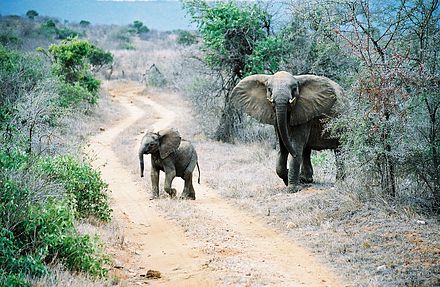
The park is located in Kajiado County, Kenya. The park is 39,206 hectares (392 km2; 151 square miles) in size at the core of an 8,000 km2 (3,100 square mlesi) ecosystem that spreads across the Kenya-Tanzania border. The local people are mainly Maasai, but people from other parts of the country have settled there attracted by the successful tourist-driven economy and intensive agriculture along the system of swamps that
makes this low-rainfall area, average 350 mm (14 in), one of the best wildlife-viewing experiences in the world with over 400 species of birds including water birds like pelicans, kingfishers, crakes, hamerkop and 47 raptor species. The park protects two of the five main swamps, and includes a dried-up Pleistocene lake and semiarid vegetation.
About 240 km (150 miles) southeast of Nairobi, Amboseli National Park is the second-most popular national park in Kenya after Maasai Mara National Reserve.
Click here to learn more, watch a video or even get a quote for this safari tour
Tsavo East National Park
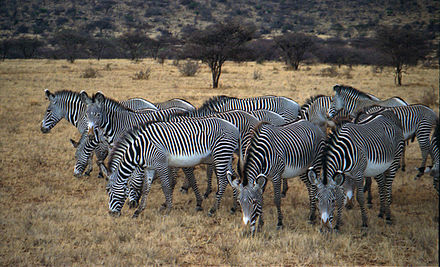
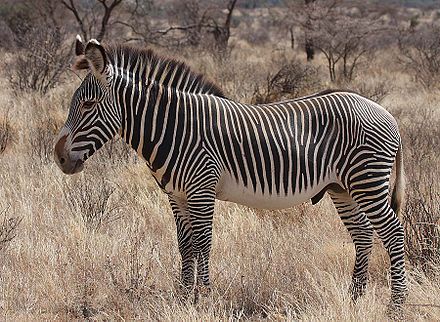
Tsavo East National Park is one of the oldest and largest parks in Kenya at 13,747 square Kilometres ( 5,308 sq. miles). It is the home to lions & birds. The park is situated in a semi-arid area previously known as the Taru Desert it opened in April 1948, and is located near the town of Voi in the Taita-Taveta County of the former Coast Province. The park is divided into east and west sections by the A109 road and a railway. Named for the Tsavo River, which flows west to east through the national park, it borders the Chyulu Hills National Park, and the Mkomazi Game Reserve in Tanzania.
Inside Tsavo East National Park, the Athi and Tsavo rivers converge to form the Galana River. Most of the park consists of semi-arid grasslands and savanna. It is considered one of the world's biodiversity strongholds, and its popularity is mostly due to the vast amounts of diverse wildlife that can be seen, including the famous 'big five' consisting of lion, black rhino, cape buffalo, elephant and leopard. The park is also home to a great variety of bird life such as the black kite, crowned crane, lovebird and the sacred ibis.
Tsavo East National Park is generally flat, with dry plains across which the Galana River flows. Other features include the Yatta Plateau and Lugard Falls. Tsavo West National Park is more mountainous and wetter, with swamps, Lake Jipe and the Mzima Springs. It is known for birdlife and for its large mammals. It is also home to a black rhino sanctuary.
Click here to learn more, watch a video or even get a quote for this safari tour
Lake Nakuru National Park
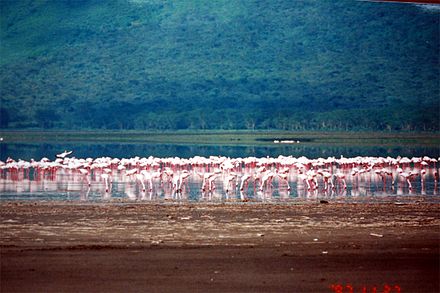
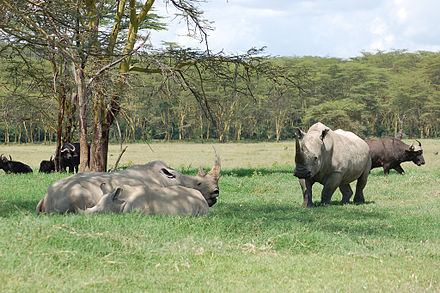
Lake Nakuru National Park is about 188 km2, 73 miles2), was created in 1961 near Nakuru Town. It is best known for its thousands, sometimes millions of flamingos nesting along the shores. The surface of the shallow lake is often hardly recognizable due to the continually shifting mass of pink. The number of flamingos on the lake varies with water and food conditions and the best vantage point is from Baboon Cliff. Also of interest is an area of 188 km (116 miles) around the lake fenced off as a sanctuary to protect giraffes as well as both black and white rhinos.
The park has recently been enlarged partly to provide the sanctuary for the black rhinos. This undertaking has necessitated a fence - to keep out poachers rather than to restrict the movement of wildlife. The park marches for 12.1 km on the south eastern boundary with the Soysambu conservancy which represents a possible future expansion of habitat for the rhinos and the only remaining wildlife corridor to Lake Naivasha.
The park in (2009) had more than 25 eastern black rhinoceros, one of the largest concentrations in the country, plus around 70 southern white rhinos. There are also a number of Rothschild's giraffe, again relocated for safety from western Kenya beginning in 1977. Waterbuck are very common and both the Kenyan subspecies are found here. Among the predators are lions, cheetahs and leopards, the latter being seen much more frequently in recent times. The park also has large sized pythons that inhabit the dense woodlands, and can often be seen crossing the roads or dangling from trees.
As well as flamingos, there are myriad other bird species that inhabit the lake and the area surrounding it, such as African fish eagle, Goliath heron, hamerkop, pied kingfisher and Verreaux's eagle among others.
Click here to learn more, watch a video or even get a quote for this safari tour
Nairobi National park
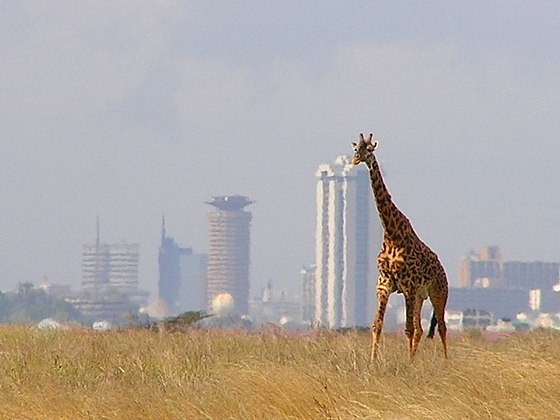
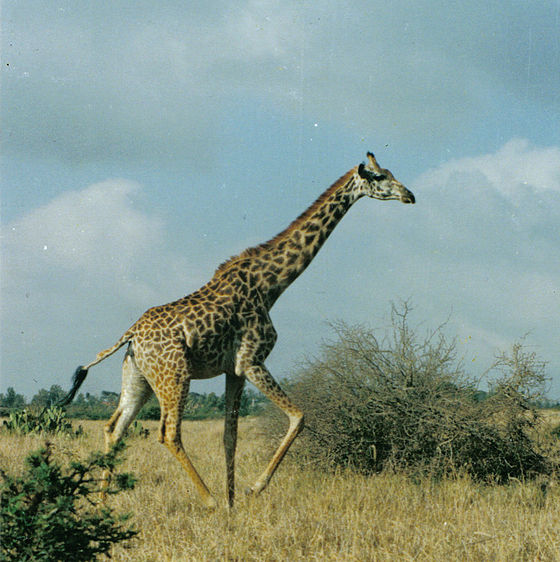
Nairobi National Park is a national park in Kenya. Established in 1946. It is located approximately 7 kilometres (4 miles) south of the centre of Nairobi, Kenya's capital city, with an electric fence separating the park's wildlife from the metropolis. Nairobi's skyscrapers can be seen from the park. The proximity of urban and natural environments has caused conflicts between the animals and local people and constantly threatens animals' migration routes.
Still, despite its proximity to civilisation and relative small size for an African national park, Nairobi National Park boasts a large and varied wildlife population. Migrating herbivores gather in the park during the dry season, and it is one of Kenya's most successful rhinoceros sanctuaries
The park covers an area of 117.21 km2 (45.26 sq miles) and is small in comparison to most of Africa's national parks. The park's altitude ranges between 1,533 and 1,760 m (5,030 and 5,774 ft). It has a dry climate. The park is the only protected part of the Athi-Kapiti ecosystem, making up less than 10% of this ecosystem. The park has a diverse range of habitats and species.
The park is located about 7 km (4.3 mi) from the Nairobi's centre. There is electric fencing around the park's northern, eastern, and western boundaries. Its southern boundary is formed by the Mbagathi River. This boundary is not fenced and is open to the Kitengela Conservation Area (located immediately south of the park) and the Athi-Kapiti plains. There is considerable movement of large ungulate species across this boundary.
The fence that separates the park from the city runs along a highway leaving the airport, this is one fact many Kenyans are proud of – this park is the only natural safari park that has a city scape background that can be seen from almost any part of the park, as seen in the picture above of the giraffes and the sky scrapers.
Click here to learn more, watch a video or even get a quote for this safari tour
Meru National Park
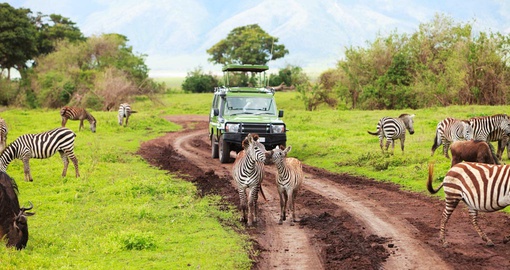
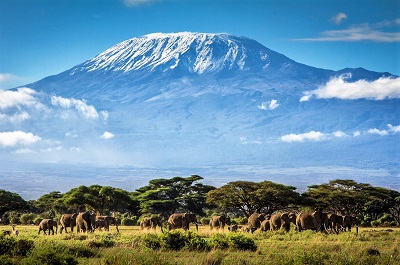
It is a Kenyan national park located east of Meru, 350 km (220 mi) from Nairobi. Covering an area of 870 km2 (340 sq mi), it is one best known national parks in Kenya. Rainfall in this area is abundant with 635–762 mm (25.0–30.0 in) in the west of the park and 305–356 mm (12.0–14.0 in) in the east. The rainfall results in tall grass and lush swamps.
The park has a wide range of wild animals including the African bush elephant, lion, African leopard, cheetah, eastern black rhinoceros, southern white rhinoceros, Grévy's zebra, hippopotamus.
Meru was one of the two areas in which conservationists George Adamson and Joy Adamson raised Elsa the Lioness made famous in the best selling book and award winning movie Born Free. Elsa the Lioness is buried in this park and part of Joy's ashes were scattered on her gravesite
Visit to Meru National Park / Meru Game Park can be done throughout the year. A visit to the Park is best combined with the nearby attractions. These include Mt Kenya National Park, Lewa Down, Samburu, Buffalo Springs and Shaba Reserve, Sweet Waters game sanctuary. Just email us and let us organize a wonderful safari to these places including Maasai Mara, Serengeti, Manyara, Ngorongoro and Lake Nakuru Combinations.
Click here to learn more, watch a video or even get a quote for this safari tour
Other famous National Parks (Please note: When you click, you will be directed to an external link)
- Arabuko Sokoke National Park
- Central Island National Park
- Chyulu Hills National Park
- Hell's Gate National Park
- Kisite-Mpunguti Marine National Park
- Malindi Marine National Park
- Malka Mari National Park
- Mombasa Marine Park
- Mount Elgon National Park
- Mount Kenya National Park
- Mount Longonot National Park
- Ol Donyo Sabuk National Park
- Ruma National Park
- Saiwa Swamp National Park
- Sibiloi National Park
- Watamu Marine National Park
Game Reserves (Please note: When you click, you will be directed to an external link)
- Arawale National Reserve
- Bisanadi National Reserve
- Boni National Reserve
- Buffalo Springs National Reserve
- Dodori National Reserve
- Kakamega Forest National Reserve
- Kisumu Impala Sanctuary
- Lake Bogoria National Reserve
- Mwaluganje elephant sanctuary
- Mwea National Reserve
- Rimoi National Reserve
- Samburu National Reserve
- Shimba Hills National Reserve
- Tana River Primate Reserve
- Witu Forest Reserve (Utwani Forest Reserve)
- Kiunga Marine National Reserve